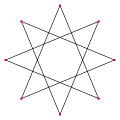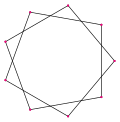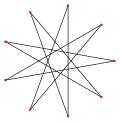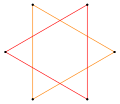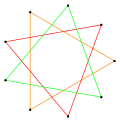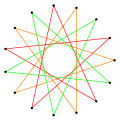
In geometry, a generalized polygon can be called a polygram, and named specifically by its number of sides. All polygons are polygrams, but they can also include disconnected sets of edges, called a compound polygon. For example, a regular pentagram, {5/2}, has 5 sides, and the regular hexagram, {6/2} or 2{3}, has 6 sides divided into two triangles.
Contents
A regular polygram {p/q} can either be in a set of regular star polygons (for gcd(p,q) = 1, q > 1) or in a set of regular polygon compounds (if gcd(p,q) > 1). [1]



